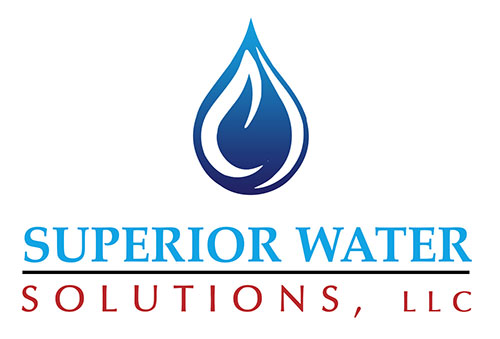It is important for our health and well-being to have access to high-quality water. Safe, clean drinking water is a basic human need that is easy to take for granted. However, water that contains contaminants can be very bad for your health, so it is important to know where our water comes from and how to make sure it is safe.
What Makes Water Superior?
Superior water meets high standards for purity and cleanliness. It is free from harmful levels of chemicals heavy metals, and disease-causing pathogens. Some characteristics of high-quality drinking water include
- Clear, without strange odors or colors
- Neutral pH between 6.5 and 8.5
- Free from sediment and cloudiness
- Low levels of inorganic contaminants like lead, arsenic, and nitrates
- No detection of coliform bacteria like E. coli
- Minimal disinfectant byproducts from chemical treatment
Water quality can vary greatly depending on the source. Municipal tap water is treated but still contains some level of contaminants. Well water is untreated and quality depends on the geology of the land. Bottled water may not be safer or purer than tap water despite high costs. Understanding your water source is key.
Health Effects of Contaminants
Exposure to water contaminants can cause acute and chronic health effects. Microbes like bacteria, viruses, and parasites can cause gastrointestinal illness. Inorganics like heavy metals accumulate in the body over time and affect organ function. Organic compounds like pesticides and solvents are linked to cancer and organ damage. Even aesthetics like taste and odor affect people’s willingness to drink enough water.
Some people are especially vulnerable to water contaminants like infants, young children, pregnant women, elderly people, and those with compromised immune systems. However, everyone benefits from water meeting higher purity standards.
Water Treatment Methods
Various treatment methods are used to improve water quality:
- Filtration uses physical barriers and adsorbents to remove particles, microbes, and some chemicals.
- Disinfection kills microorganisms using heat, UV light, or chemicals like chlorine.
- Softening removes minerals like calcium and magnesium that cause hard water.
- Reverse osmosis uses pressure to force water through a semipermeable membrane, removing inorganic and organic matter.
- Distillation boils water and condenses the vapor to purify.
- Oxidation removes iron, sulfur, and manganese by converting them into particles that can be filtered out.
Combinations of methods target both aesthetics and health hazards. In a home, point-of-use systems make sure that all faucets have clean water.
Checking Water Quality
To verify water purity, certified labs can test for:
- Microbiological contaminants
- Inorganic chemicals like heavy metals
- Organic compounds like hydrocarbons
- Radioactive substances like radon
- General chemistry measures like pH, hardness, and turbidity
Testing at the source and point of use ensures treatment systems are working properly. Annual testing helps detect seasonal variations in quality. Some contaminants require multiple tests over time to accurately assess average levels.
Home test kits are affordable but test a limited set of parameters. Lab testing provides more reliable, comprehensive results to identify issues. Certified technicians can interpret results and recommend appropriate solutions.
Improving Water in Homes and Businesses
For superior quality water, a whole-house treatment system customized to your needs is ideal. Point-of-use options like countertop or under-sink filters, pitchers, and dispensers make water cleaner at specific taps.
Maintenance is key. Replace filters and disinfection chemicals per manufacturer instructions. Keep records of testing results. Monitor flow rates and pressure changes. Have a water quality professional inspect systems annually.
For businesses like restaurants, medical facilities, and food processing plants, advanced water treatment and regular testing are extremely important. Contaminated water can affect operations, put people at risk, and damage reputations.
Working with a qualified water quality expert can help you make sure that your water is always clean, fresh, and tastes good. Investing in clean water pays dividends for health.
The Bottom Line
The health and quality of life are greatly affected by the water quality. Concerningly low amounts of microbial, chemical, and physical contaminants are not found in Superior water. Water that has been treated with UV light and reverse osmosis is clean and safe. Every year, certified labs test your water to make sure it meets purity standards and find any risks. Make sure the water in your home or business is of high quality for your health and peace of mind.

The most recommended American Made water system in California
![]()
Helps to prevent limescale buildup.
![]()
Whole House Water Filtration System

“I have a whole home system from Superior Water, and making my own safe filtered water keeps me from having to wait in line with other people for their “bottled water.” My “updated” WATERBOY System and the ability to social distance are both great!”

“What an amazing team you have. From Joe ordering and delivering to Jade reminding us to tell the Owners the day before to extreme experienced and professionals as George and Jose. Thank you for a TERRIFIC job in installing a whole house system and a fluoride tank. Such conscientious help! So appreciated. ”.

“We still have better than bottled water from every tap in our home. The biggest difference right now, I’m filling gallon water bottles to go for family members. They no longer run to Costco for water. Thanks”.

How Does Reverse Osmosis Work? | Superior Water & Air Utah
FAQ
Is Lake Superior water good to drink?
There are nine Great Lakes. Lake Superior is the cleanest, and many people drink the water from it every day, even in their own homes. On trip, the decision is yours. For your safety we bring a high quality water filter or boil our water.
How much does a Waterboy whole house system cost?
Waterboy systems cost $900 to $5,000. Waterboy makes some unique products that help filter out pollution from your supply. They offer salt-free water softening beneficial to people who cannot tolerate extra salt.
Are water softeners necessary?
The decision to soften is a personal choice that can affect your home and the environment. If your water’s hardness is greater than 7 grains per gallon or 120 mg/L, then you might need a water softener to ensure your appliances run well and to improve the taste, smell, or look of your water.
What is the best water in the US?
Anchorage, Alaska has been rated at the top, at number one, for the best tasting municipal water. Its source is Lake Eklutna in the Chugach Mountains. This lake melts water from several mountain glaciers, with the Eklutna Glacier being the largest.
How much water does Lake Superior have?
There is 30 centimeters (12 in) of water in Lake Superior that is deep enough to cover all of North and South America. [b] The shoreline of the lake stretches 2,726 miles (4,387 km) (including islands). The lake boasts a very small ratio (1. 55) of catchment area to surface area, which indicates minimal terrestrial influence.
What is Lake Superior known for?
The hills and mountains that border the lake hold moisture and fog, particularly in the fall. Most of Lake Superior lies within the basin of the Midcontinent Rift. The rocks of Lake Superior’s northern shore date back to the early history of the earth.
Where is Lake Superior located?
Most of Lake Superior lies within the basin of the Midcontinent Rift. The rocks of Lake Superior’s northern shore date back to the early history of the earth. During the Precambrian (between 4.5 billion and 540 million years ago) magma forcing its way to the surface created the intrusive granites of the Canadian Shield.
How deep is Lake Superior?
Its average depth is 80.5 fathoms (483 ft; 147 m) with a maximum depth of 222.17 fathoms (1,333 ft; 406 m). Lake Superior contains 2,900 cubic miles (12,100 km 3) of water. There is enough water in Lake Superior to cover the entire land mass of North and South America to a depth of 30 centimetres (12 in).
Where can I find a book about Lake Superior?
Hyde, Charles K.; Mahan, Ann & Mahan, John (1995). The Northern Lights: Lighthouses of the Upper Great Lakes. Detroit: Wayne State University Press. ISBN 9780814325544. Langston, Nancy (2017). Sustaining Lake Superior: An Extraordinary Lake in a Changing World. New Haven, Connecticut: Yale University Press. LeMay, Konnie (July 30, 2018).
Who is Superior Plumbing & Rooter service?
At Superior Plumbing & Rooter Service we have an experienced excavation crew thats been working together for over 15 years so you can expect us to respect your property. After are licensed plumbers complete the quality, precision plumbing work most excavated areas are tamped and left flat.